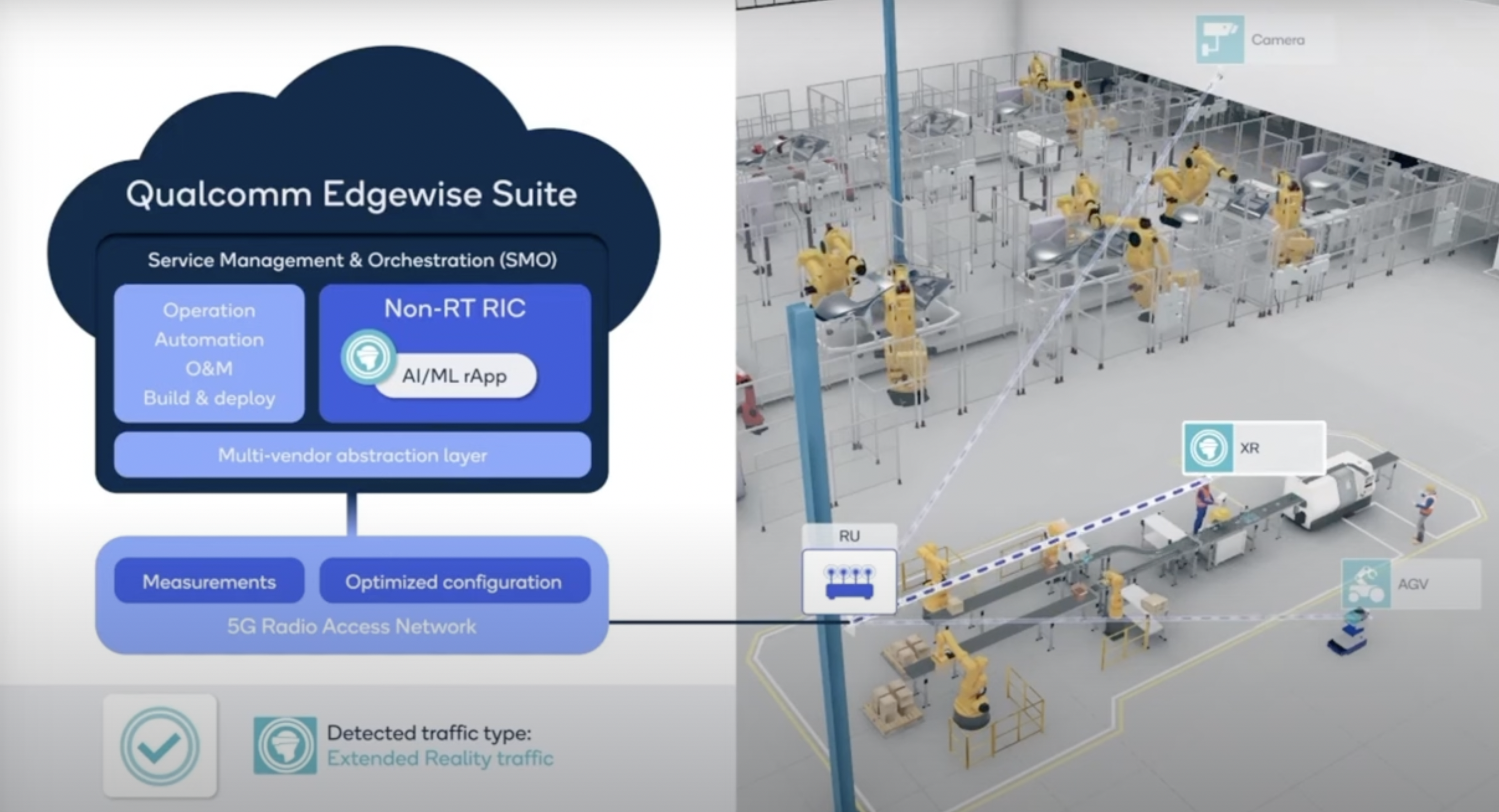Qualcomm brings multi-vendor automation and SMO capabilities to private networks with the Edgewise Suite
As Industry 4.0 concepts meant to optimize efficiency in sectors like manufacturing, utilities, mining and more gain interest and adoption, private networks, including 4G, 5G and Wi-Fi, are emerging as a key piece of a bigger puzzle. Keeping in mind the highly-variable needs of vertical- and use case-specific applications, many industries combine private connectivity with edge computing and AI/ML-based systems to automate decision-making processes and actions.
But let’s start at the beginning—what is the key consideration in developing and deploying a private network? “The first and most important thing is to make the private network deployment more flexible, more streamlined,” Qualcomm Senior Director of Technology Xiaoxia Zhang told RCR Wireless News during Mobile World Congress 2023.
To help avoid detailed, manual deployments, she said, Qualcomm developed the Edgewise Suite of tools to plan, deploy and manage multi-vendor private network radio systems. “In this case, it will give you lots of capability in making the private network flexible.”
Zhang called out the need for “adaptive operations” of private networks so that various configurations can be continuously changed and optimized for specific applications or devices. Initial deployment configurations, she said, “may or may not be the best choice for individual applications or each individual device. So adaptive operations allow you to, for example, based on the RAN measurement, then configure the RAN parameters for each individual device.”
Bigger picture, the Qualcomm Edgewise Suite provides RAN planning, deployment, management and automation tools that accelerate the deployment of both public and private networks.
Qualcomm taking an ecosystem-oriented approach to accelerating industrial adoption of private networks
The private networks vendor ecosystem, operators included, has recognized the need to carefully balance the development of highly-customized solutions tailored to specific industries and use cases with the need for horizontal platforms that support replicable solutions in multiple verticals. This ecosystem-oriented approach was reinforced by Qualcomm’s work with Capgemini to deliver a novel 5G-enabled automated hoisting solution to Schneider Electric.
The system was installed at Schneider Electric’s hoisting lab in Grenoble, France. The goal is for Schneider to test the system before bringing it to customers in sectors ranging from supply chain and shipping to avionics and automotive manufacturing. The high reliability, low latency private 5G network supports manual and autonomous capabilities. Video cameras for monitoring and remote operation coexist on the same network with Programmable Logic Controllers used for control and safety functions.
“Digital transformation is helping Schneider Electric customers generate step-change advancements in productivity, efficiency and sustainability, but not one company can do it alone,” Schneider Electric VP of Innovation and Upstream Marketing Marc Lafont said in a statement. He called the system a “breakthrough end-to-end 5G private network hoisting solution…We will experiment with deeper integration of 5G technology inside our automation equipment.”
Precise positioning and RF sensing
If you consider broad private network use case categories, as well as specific applications, many verticals benefit from automating control of remote and/or moving objects. To properly manage these types of deployments—think autonomous guided vehicles pulling inventory in a logistics facility—it’s imperative to know where every asset is. As Zhang put, “Positioning information is key.”
During MWC Qualcomm showed private networks demos yielding single-digit centimeter-level positioning in complex indoor environments. Using machine learning for predictive positioning allows autonomous operations to continue even in non-line-of-sight or otherwise challenging radio environments. The next evolution of precise positioning, Zhang said, is RF sensing. In this case, changes in radio propagation can be analyzed, contextualized and used to determine the location, direction and other dimensions of a device that’s not equipped with a cellular modem. “This one allows us to track the environment very accurately, and also to enable the digital twin which is really a fundamental, ultimate goal for 5G private networks. “
For more information on how Qualcomm is enabling private networks, watch the following videos:

